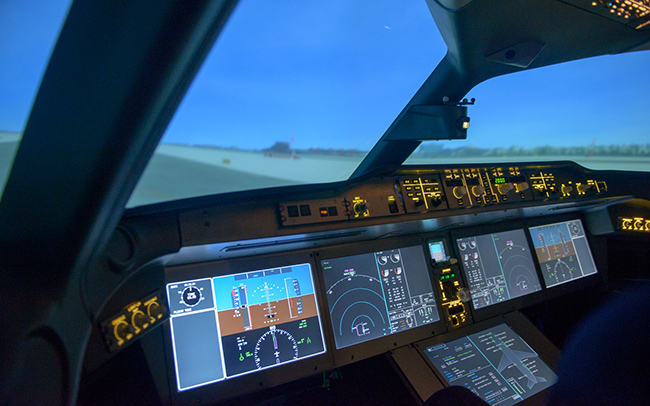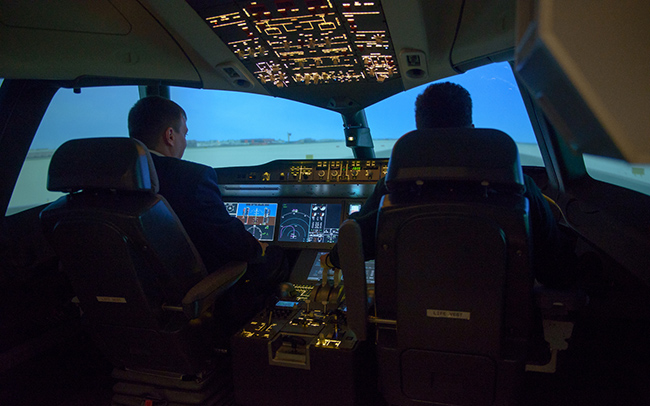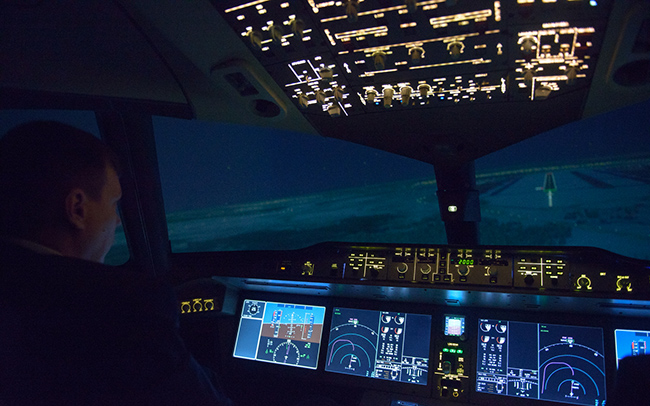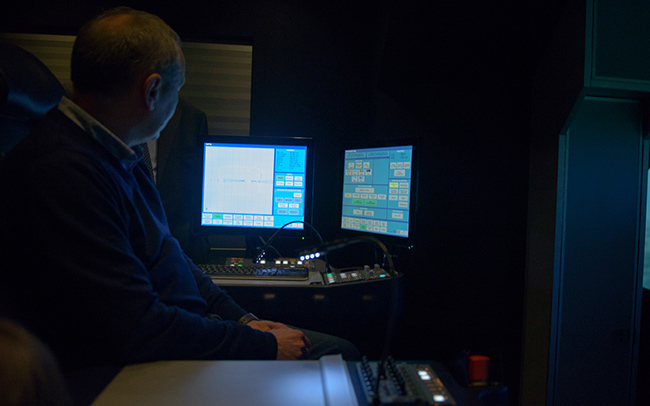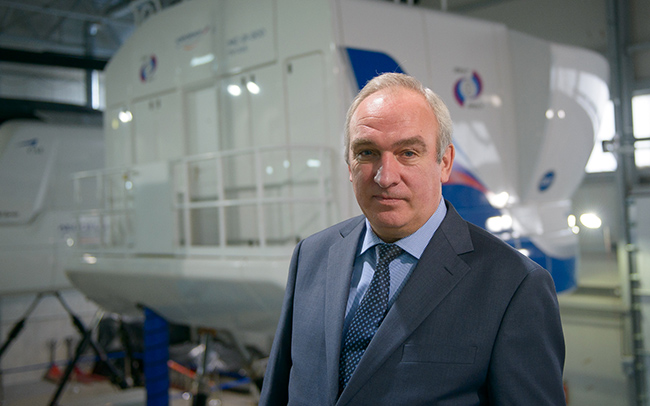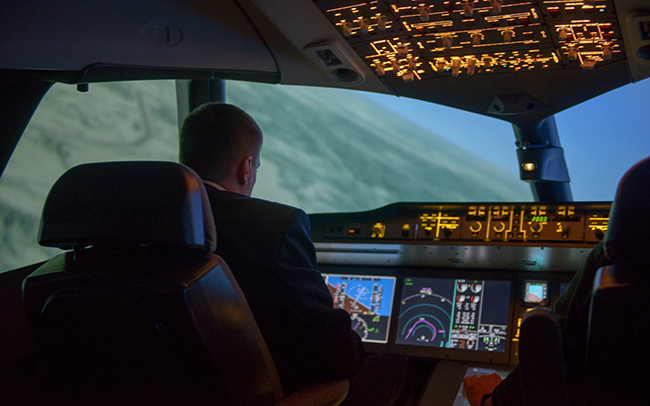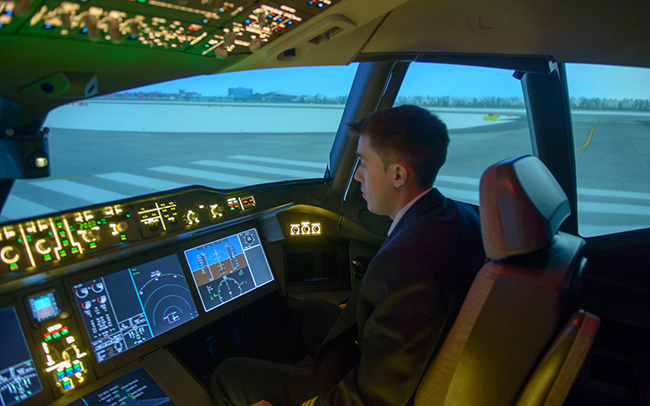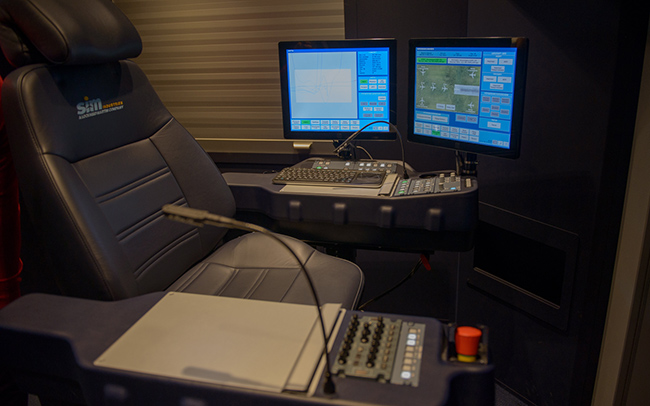The creation of an effective system of training of aviation personnel in time is one of the key objectives of the program of the creation a new aircraft. It is very complicated, and therefore the development of the system was launched at early stages of the program. The creators of the system initially understood how important it is to recruit the future aircraft operators. Therefore, even in 2012 the Irkut corporation and the Aeroflot - Russian Airlines company have concluded a cooperation agreement in which framework are being developed all technical means of education and training programs for the training of aviation personnel for the MC-21 program.
The basic component of the training system is a complex of the technical training aids (TTA), which is created on the basis of advanced domestic and international experience and in according the requirements of international regulations (ICAO, IATA, EASA). On a request of the Irkut corporation is developing a set of TTA conducted by the company NPF Systems Integrated Simulator. This is an experienced developer of such systems, which since 1992 has created simulators for aircrafts like Tu-204, Il-96, An-124, An-148 and others.
The complex consists of TTA, providing a full cycle of training of all categories of aviation personnel: pilots, cabin crew (flight attendants) and engineering staff. Just a line of technical training aids - 13 items. TTA prototypes for the MC-21 program takes place in the gym of the Department of complex aviation training company Aeroflot - Russian Airlines. Here it is planned to install all elements of the TTA complex of the MC-21 family and provide crews with training for 6 months before entering the aircraft into operation.
The most expensive and technically complicated means of pilot training is the Full Flight Simulator. It allows pilots to practice actions as close to real life as possible, thanks to the installation the cockpit on a dynamic stand. The simulator allows you to practice flying, aircraft navigation or operation of onboard systems and equipment, communication and interaction between the crew members and ground services. All tasks can be fulfilled in conditions of failures, malfunctions and special occasions the flight in accordance with the MC-21aircraft Flight Manual. An integrated simulator MC-21-300 fully meets the requirements to the flight simulation training device according to international standards (Level D by JAR-FSTD classification and Layer 7 classification ICAO doc 9625).
From open sources it is known that the cost of the flight hours of training on Full Flight Simulators is quite high - 600-700 euros. As a rule, the work schedule on such simulators is very tight - lessons are conducted around the clock. Therefore, an integrated simulator for unloading and reducing the cost of pilot training is being developed in parallel, so-called procedural trainer level 3 Delta for ICAO doc classification. 9625. It allows you to work off up to 40% of the tasks of flight training at a cost of flight hours 25-30% of the similar rate integrated simulator - about 150 euros per hour.
From open sources it is known that the cost of the flight hours of training on Full Flight Simulators is quite high - 600-700 euros. As a rule, the work schedule on such simulators is very tight - lessons are conducted around the clock. Therefore, an integrated simulator for unloading and reducing the cost of pilot training is being developed in parallel, so-called procedural trainer level 3 Delta for ICAO doc classification. 9625. It allows you to work off up to 40% of the tasks of flight training at a cost of flight hours 25-30% of the similar rate integrated simulator - about 150 euros per hour. - тренажер аварийно-спасательных процедур;
- Emergency procedures trainer ;
- Fire-fighting simulator;
- Doors simulator;
- Service trainer aboard the MC-21 aircraft;
- On-board emergency equipment Land and Water.
TTA for cabin crews of the MC-21 aircraft is at the stage of development and will also be deployed in the training complex of Aeroflot.
The head of the TTA project from the Irkut corporation Vladimir Alimov says:
The whole complex of TTA will be installed on the base of Aeroflot, because the company is the launch customer the MC-21 aircraft. Aeroflot has represented the requirements for the equipment that we will deliver as the starting line of the TTA. The starting lineup was approved by the working group of PJSC UAC and admitted as a start for all prospective aircrafts that will be developed by UAC. Furthermore, Aeroflot has developed and presented the requirements on the structure and types of flight simulators, also represented the tasks that should be resolved by each simulator. In development the starting lineup of the TTA we focus on these requirements.
Full Flight Simulator was built and launched in November last year. As the aircraft is being manufactured builds we are continuously refining the simulator. Therefore, at the moment it is still a prototype. About its validation with the software of the real aircraft we can speak only after the first flight of the aircraft and the flight test data. Right now the simulator is ready for this.
The simulator is built on mathematical models that simulate the operations of the aircraft, which greatly reduces its costs and allows to make changes during the design of the aircraft. At the same time, thanks to the simulator it has been possible to determine the final shape of the cockpit, the location of the devices, control systems. During this year we have made a number of improvements, including ergonomics - somewhere we moved the handle, somewhere we moved the switch, etc.
There is the IATA standard that regulates the requirements for the original data for creating flight simulators. On this basis is built "hardware", software and methodical support of simulators. We have passed all this way completely according to the documents. First simulator was built by assumed and estimated performance. We considered all nodes, systems, units, developed models and the processes of functioning of the program, occurring in the aircraft engines. Based on this information we created mathematical and imitating models of functioning of the aircraft systems.
At the next stage the systems of the aircraft rigs came clear: electrical systems, control system, chassis, etc. When these rigs have worked, we have received the information from them and have adjusted our data on the results of the tests. Then chief designer rig has worked, board equipment complex stand, airborne avionics rig, and we got the data from there too. Already it is clear that we are going in the right direction. Our data meet. Remained stage is the beginning of the flight tests of the aircraft, and we are going to verify the simulator features on the convergence of the real aircraft. Only then we can say that we are ready for the preparation of flight personnel.
For technical staff there is a created maintenance procedures simulator (MPS). This is a novelty, and we are proud of it. It is exactly the simulator for testing tasks of troubleshooting, working off ground support MC-21 procedures. Instrumental and software content displayed on MPS for the engineering staff is a serious content, complicated mathematical models. They repeat the real aircraft, the operation of its systems, providing the situations as close as possible in real conditions. The student shouldn’t just watch the "cartoon", but press the right buttons, hold the real test, to delve into the documentation, perform all the necessary procedures and, as a result, eliminate the fault.
For the theoretical training there are educational computer classes for flight personnel, engineering and technical personnel, cabin crew. Also for the technical staff there is developed an interactive educational displays with current aircraft systems for more in-depth study of the functioning of the aircraft systems.
First procedural simulator for the MC-21 program was created in 2012. It was shown at the MAKS-2013 and MAKS-2015, and then at the international air show in Farnborough, Le Bourget, Singapore and received a very good feedback from foreign experts. Exhibitions were often re-visited by pilots of leading airlines just to fly on the simulator. We are happy to show them what's new and how far we’ve come.
We would like to mention our close ties with the Aeroflot, which will be the first operator of the MC-21 aircraft. The cooperation began after the signing of the bilateral agreement on cooperation in the framework of the creation of the TTA. Aeroflot is the largest airline in Russia, it has a wide experience of training personnel. This experience translates into the MC-21 program in the form of a serious methodological assistance by the company management, the Department of aviation training and flight-methodical department.
Communicating with line pilots of Aeroflot is very useful. Many of them flew on simulators, expressed their opinions, gave suggestions and comments. We are collecting all this data, compiling and transmitting it to ergonomics and system departments of our design bureau. These activities are aimed not only to develop the TTA. We work together to create a convenient and intuitive aircraft for pilots.






